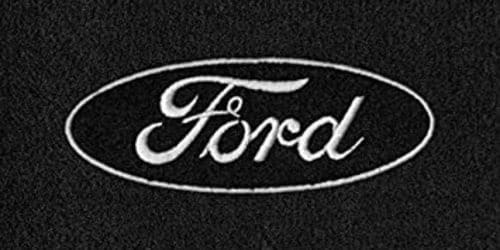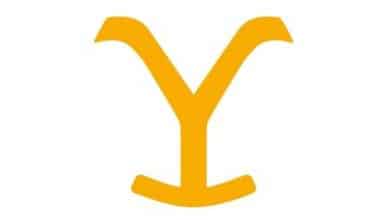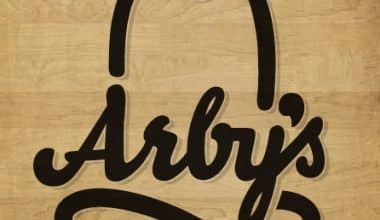Ford is the largest American automaker and has investments in numerous other automakers. Ford Motor Company is her full name. The corporate headquarters are in Dearborn, Michigan, near Detroit (USA). During the spring and summer of 1903, the company was formally in control and put into operation. Henry Ford is the company’s founder. This article talks about the old Mustang Tom Ford logo history, with its color and logo on the floor mats, brands, and cars.
Mustang Ford Logo
Mustang aficionados all across the world adore the Mustang Ford logo. It is recognizable everywhere. However, very few people are aware of the origins of one of the most well-known badges in sports car history. At the same time, few people understand how a running horse inspired Phillip Thomas Clark to create the Mustang emblem.
Mustang Symbol
The Mustang logo is a brand of car, manufactured by Ford Group. The first car bearing the label was in existence in the year 1964. Mustang has manufactured almost 10 million vehicles since its inception.
In 1962, Ford had the idea of building a sports automobile. We all know that the car was first introduced in 1964 and that the production line began one year later. Phillip Thomas Clark, then 27, had to create an automobile logo. He used to work for GMC but left to join Ford. He was ecstatic about the fresh notion that was about to take place.
It was to be one of the world’s most powerful and attractive automobiles. After 100 days of intense designer work, the pony image appeared. The badge was redesigned and updated multiple times before it was initially introduced. Clark was well-known for his animal sketches. He created some drawings for neighborhood cafes and other businesses. But this time, he had to make something that fit the name of the new model and showed how American it was.
Additional Information
Ford introduced the Mustang brand for the first time in 1964. It was to be a young, luxurious, and inexpensive sports car by the company that made it. The Ford Mustang has become a legend, and people all over the world can instantly recognize its famous logo.
The car was called the Cougar before it came out, and the first ones even had a logo of this animal on them. The corporation, however, opted to change its name. Allegro, Torino, and Avanti were among the many alternatives available. Finally, the brand had become recognizable after the fighter plane, the P-51 Mustang, rather than the horse.
Ford took its time selecting the right name and visual identity design for the brand, but once done, the Mustang emblem clung to the automobile and has stayed practically unaltered to this day.
The Symbol
In 1964, one of the most recognizable automotive badges was designed. Phil Clark created the iconic running horse, which has only been significantly updated over the years.
The horse is galloping rather than running in the 1964 version of the logo, and its head and neck are horizontal. Later, it transforms into the familiar running horse. Over time, the insignia became crisper and more savage, and the lines of the silhouette became stronger and more identifiable.
The Mustang emblem took approximately a year to design since the brand couldn’t settle how the horse should look or which way it should face.
The Form
Several theories exist as to why the iconic mustang was painted running from right to left. The first version claims that it was done because the artist was right-handed and it was simply easier for him to draw a horse galloping that way, while the second version claims that it represents the car’s free spirit by depicting the horse racing in the opposite direction as others. Another explanation is that it was done by mistake when converting from the original drawing.
Whatever the exact cause, the Ford Mustang’s running pony is an iconic symbol that embodies the company’s values of speed, freedom, and style.
The Color
The silver color of the Mustang symbol is an excellent choice for conveying the brand’s energy and power. The classic red hue of Mustang cars serves as a fantastic backdrop for the symbol placement, making it appear even more sophisticated and expensive.
The silver emblem, which is brilliant and stylish, generates a sense of professionalism and authority for the company, but when placed on red, it expresses the enthusiasm for speed and freedom.
Some components were added to the Mustang logo over the years, such as a pink ribbon (for breast cancer awareness) and a tricolor vertical rectangle (for American flag colors), but the base of the logo is minimalist and simple, which is why it appears right and attractive on any background.
Tom Ford Logo
Tom Ford logo SA, also written as TOM FORD, is a high-end fashion house that designer Tom Ford started in 2005. Its collection includes ready-to-wear and made-to-measure items, as well as footwear, accessories, and purses. Estée Lauder licenses Tom Ford’s name and logo for Tom Ford Beauty, which sells cosmetics and fragrances, and Marcolin Group for eyeglasses.
The designer and filmmaker’s full name is Thomas Carlyle Ford. He was born in Austin, Texas, and spent his childhood in the Houston suburbs and San Marcos, Texas, just outside of Austin.
Ford dropped out of Bard College in Simon’s Rock, where he had started at age 16, and went to New York City to attend New York University. He later studied interior design at Parsons, The New School for Design. Despite spending his final year studying fashion, he graduated with a degree in architecture. Before launching his own label or logo, Tom Ford was the creative director at Gucci and Yves Saint Laurent.
In addition to a thriving fashion career, Ford is also a filmmaker. He directed the films A Single Man (2009) and Nocturnal Animals (2016), both of which received Academy Award nominations.
The Tom Ford logo history
2005 – 2011
The former logo, like the current one, included the designer’s name. It was written in Arial font here. This is a very popular sans serif typeface and set of computer fonts that come with all versions of Microsoft Windows and Apple’s macOS. The letters of the wordmark are separated by a reasonable amount of space.
While this design achieved its goal – presenting the brand’s name in a properly clear manner – it was neither unique nor memorable. This could have been one of the factors that led the corporation to go for a somewhat revised look.
2011 – 2021
Once again, the brand’s design team chose a basic, completely practical sans-serif typeface. This time, it looks to be the same type, with roughly the same sizes of letters, albeit their placement appears to alter slightly from its predecessor. The spacing between the characters has shrunk significantly.
Colors
The palette of the Tom Ford emblem is essentially the same as that of the majority of fashion brands, black and white. This is a good method because it does not limit the number of backdrops other than white that can be used without changing the color of the logo. What distinguishes Tom Ford’s wordmark is that it is frequently dominated by black, as black, rather than white, is typically utilized as the background color.
Ford Logo Old
The initial Ford Motor Company emblem was the most complicated. This vintage Ford emblem featured the words “Ford Motor Co” as well as “Detroit Mich” to highlight where the brand originated.
An intricate frame of leaves and whirling swirls surrounded the phrases, which were written in a curvy sans-serif typeface.
This initial Ford logo design was frequently seen in black, with a white frame and white lettering. The letters were also created to move in a wave manner, giving them the appearance of spontaneous handwriting.
Ford is the flagship brand of Ford Motor Company, the second-biggest manufacturer in the United States and one of the world’s largest family businesses. Her cars are sold practically everywhere, and they can be found driving throughout towns, off-road, and on race tracks. The manufacturer produces automobiles that run on alternative fuels in addition to those with gasoline engines. The ancient Ford emblem was classy, elegant, and normal for the time, despite its complexity today.
Ford Logo History
Ford is one of the most-known brands in the automotive business, with one of the world’s most famous logos. And, like the company, the logo is rich in significance and history. In the following paragraphs, we’ll look at the history of the Ford logo, its evolution, design aspects, and then the history of the Ford Motor Company.
Initially, the organization for vehicle manufacturing appeared a few years before the recognized date. The Cadillac Motor Company was established in November 1901. However, the founder departed it a year later, along with the right to this trademark. As a result, twelve investors formed a new firm in late autumn of 1903. She quickly had her emblem.
When Henry Ford created the Ford Motor Company in 1903, the design was far from the blue Ford insignia seen today. It was green, and it wasn’t reproduced in the unique typeface you see today.
Additional Information
Indeed, the early Ford logo was significantly more complex, with more text and an embroidered edge.
While the distinctive Ford inscription was not displayed on the first-ever Ford Model A, it was widely used in all business correspondence. Aside from the well-known legend that the Ford emblem was designed by Henry Ford, it was created by Childe Harold Willis, the company’s first head engineer, and designer.
In 1907, the Ford inscription first appeared on the famed Ford logo. It has been included in every Ford logo iteration since then, with slight adjustments to the wording.
Twenty-four years after Ford’s founding, the business changed its logo to the one it uses today. Since 1927, the brand has had three official logo variants, all of which are quite similar to the current design.
Minor adjustments have been made to all of them, such as changing the Ford lettering and making the oval a little rounder.
1903 – 1907
The first logo is a vivid representation of its era. It resembles a spherical badge with a flowery pattern of stems and leaves. The abbreviated brand name is in the center, in the diagonal oval. The first row has the word combination “Ford Motor,” the second has “Co.,” the third has “Detroit,” and the fourth has “Mich.” (part of the name of the state). Wavy lines are used.
1907 – 1909
The corporation opted to replace the vintage insignia with a modern one in 1907. As a result, the leaves, stems, and curls have vanished, and it now has the shape of an eye or a rugby ball. Several inscriptions can be found on the oval form. The biggest one is in the middle. The word “Ford” is written with irregular letters: the central ones are enormous, while the side ones are little. The background became gray for the first time, while the color appeared on the logo for the first time. Childe Harold Wills is the designer behind this rendition of the logo.
1909 – 1911
At the time, the vehicle business introduced a new emblem, which became the foundation for all later versions. It is only one inscription – a single handwritten stroke. The word “Ford” is written in italics, mimicking handwriting, and is surrounded by quotation marks in the shape of two merged dots. It features a long tail that extends from the “d” and creates the bottom line and is adorned with various curls and rounded shapes.
1911 – 1912
The designers were inspired by Henry Ford’s unique signature. They arranged it in a horizontal oval surrounded by a double line — a broad inner (white) and a thin outer (black) (black). And the developers have inserted the terms “The Famous” (above) and “Motor Cars” around them (below).
1912 – 1917
Following a drastic overhaul, the vehicle company received a completely new emblem, reminiscent of a coat of arms in the shape of a soaring bird. Her tail is long and her wings are extended. The symbol is blue and bears the original signature along with the slogan “The Universal Car.”
1917 – 1927
Ford has utilized a simplified version of the logo for the past ten years. It merely has the name, the founder’s signature, and an oval encircled by a thin black stripe. The inside backdrop is a delicate lilac color.
1927 – 1957
The hue of the background grew by several tones and became a rich purple. There is also double edging. White is used for the text and lines. However, with the 1949 versions, a separate logo – the coat of arms – was utilized.
1957 – 1961
The Ford symbol has been redesigned as a curled oval with a bulging middle and tapered end. A dark purple replaces a vibrant purple. The letters have been somewhat altered: the strokes have been extended, and the characters themselves have been rounded.
1961 – 1965
Another revision included a new typeface style – flattened and stretched. This is due to the oval being narrower and more conventional, with no nubs. The purple tint was replaced with a dark blue by the designers. They also installed dual pipework.
1965 to 1976
The brand name has been completely redesigned: it is now an ellipse with a white inner outline, eerily similar to the 1927 insignia. Italic font that is tall and stylish. This logo was moved to alternate ones in 1976, however, the vehicle firm afterward returned to the main group (in 2017). Two more emblems were used in tandem with it.
1976 – 2003
The Ford emblem has been transformed into dark cobalt, a beautiful, and voluminous design with highlights, a gradient, and a chrome border (now the edging is wide silver, with shadows).
2003 – 2017
The oval badge has been updated for the centennial. The new design was created by the Pantone studio. She got rid of the large silver border, replaced the metallic texture with a blue gradient, and added a 3D effect. However, in 2017, the corporation returned to its original 1965 2D logo. Simultaneously, the 2003 version has not fully vanished: certain models still have it within.
Ford Motor Company’s History
Ford Motor Company, or simply Ford, is an American automobile manufacturer founded in 1903 by Henry Ford and 11 associate investors. In 1919, the company was reincorporated, with Henry Ford’s family assuming complete ownership.
Until 1956, when the common shares were initially given to the public, Henry Ford, his wife, his son, their heirs, and the Ford Foundation were the sole stockholders. The carmaker, based in Dearborn, Michigan, manufactures passenger cars, tractors, and trucks, as well as motor vehicle parts and accessories.
Historical Background
In 1896, Henry Ford built his first experimental car in Detroit, Michigan. The first car was manufactured in July 1903, following the formation of the Ford Motor Company. The immensely successful Ford Model T was revealed five years later. This car was in such high demand that Ford devised new mass-production methods to meet the demand.
Henry Ford created Ford’s first American branch assembly facility in Kansas City in 1911, as well as Ford’s first international production plant in Manchester, England. Two years later, Henry Ford introduced the world’s first moving assembly line. In order to boost labor productivity even further, he instituted a daily wage of $5 for an 8-hour work (instead of $2.34 for a 9-hour workday) in 1914.
Ford built its first overseas sales branch in Paris in 1908. By mid-1914, there were over 500,000 Ford Model T vehicles on the world’s roads. By 1923, Ford was producing more than half of all autos in the United States. Late in the 1920s. Overseas assembly plants were located in South America, Europe, Canada, Asia, Australia, and South Africa.
Ford rose to become the world’s most popular automobile manufacturer. The first new Ford Model A and the last Model T were produced in 1927, followed by the first V-8 in 1932. Ford purchased the Lincoln Motor Corporation (founded in 1917) in 1922 to produce Ford’s first premium Continentals and Lincolns. Ford debuted the first Mercury, a mid-priced automobile, in 1938.
Expansion and Restructuring
Henry Ford held 58.5% of Ford by 1906. When the other shareholders objected to the notion of building the costly and massive River Rouge production factory in Dearborn, Detroit, Henry bought them out. Edsel Ford, his son, was elected president in 1909.
Edsel died in 1943, and Henry Ford took over the presidency. Henry Ford II (his grandson) took over as president two years later and reformed the company’s chaotic financial management system. He also helped to strengthen the company’s culture by hiring smart young leaders. Among these accomplishments was the failed implementation of the Edsel design. From 1945 to 1970, Henry Ford II was the company’s CEO, and from 1960 to 1980, he led the board of directors.
Throughout the 1950s and 1960s, Ford began to diversify, albeit on a small scale. However, by the 1990s, the company’s concentration had switched to automobiles and financial services. In 1989, the business purchased Jaguar (a luxury vehicle manufacturer in the United Kingdom).
Aston Martin has become a wholly-owned subsidiary by 1993. Later acquisitions included the 1994 purchase of Hertz Corporation, the 1999 purchase of Volvo’s automobile sector, and the 2000 purchase of Land Rover SUVs.
Ford also purchased a significant share in Mazda. However, as Ford’s fortunes began to fall in the early 2000s, it began to sell off these trademarks. Hertz went out of business in 2005, and Aston Martin went out of business in 2007. Ford began selling its Mazda stock in 2008 and totally divested it in 2015.
Today’s Ford
President George W. Bush stated in December 2008 that the “Big Three” automakers, Ford, General Motors Corporation, and Chrysler LLC, would receive an emergency financial rescue package to save the country’s ailing automobile industry.
The loans would keep the automakers in business until at least March 2009, when they would have to demonstrate their “financial sustainability” or return the monies. An additional requirement required the firms to undergo reorganization. The funds were first made available to Chrysler and General Motors—Ford apparently had enough money to stay afloat and hence did not require government assistance right now.
Ford was able to avoid bankruptcy, which Chrysler and General Motors both filed for, and improve market share and sales in 2009. The federal government’s “cash-for-clunkers” program, which gave customers up to $4,500 to assist them trade in older vehicles for brand-new fuel-efficient models, contributed to the success.
Furthermore, Ford prioritized stronger vehicle brands and implemented a number of cost-cutting measures. Volvo was sold to Zhejiang Geely Holding, a Chinese corporation, in 2010. Months later, Ford announced that it will discontinue production of the Mercury brand.
However, as sales fell, the automaker attempted to diversify its offers. Ford Smart Mobility was launched in 2016 to manufacture self-driving vehicles and car-sharing enterprises, among other projects. Ford revealed intentions to expand its electrified vehicle lineup a year later.
However, beginning in 2018, the business began phasing out all of its passenger cars, with the exception of the Ford Focus Active and Mustang. Instead, the automaker planned to focus on sports utility vehicles, crossover cars, and pickup trucks.
Floor Mats Ford Logo
However, with the floor mats of the Ford logo, automobile manufacturers have not lagged behind in the customization competition. Major automobile floor mat manufacturers have discovered a way to add a more personal touch to their floor mats. From logos, initials, phrases, and names to quality edge binding, we can do it all.
Unfortunately, most floor mat companies do not offer vehicle-specific logos, and you may have to comb through a lot of them to locate the ones that do. When looking for good floor mats with a Ford emblem or logo, the brand isn’t the only thing to think about. Check out this page for more information on the floor mats with the Ford logo.
Ford Logo Color
Despite having only one basic element, the Ford logo’s metamorphosis began with a complicated structure and concluded with a complex symbol. The designers concentrated on textures, colors, highlights, shadows, and transitions between them. They’ve also experimented with gradients in recent editions.
The company chose a bespoke typeface based on Henry Ford’s signature for its logo. As a result, the text is italicized and handwritten. The brand palette is diverse. It includes purple and blue in a range of tones, from light to dark. Gray is also available in metallic, silver, and chrome.
The Ford logo color palette consists of two code colors:
- HEX: #004377 RGB: (0, 67, 119).
- HEX: #ffffff RGB: (0, 67, 119), (255, 255, 255).
What Was Ford’s Original Logo?
The earliest iteration of the Ford logo as we know it today appeared in 1909. This wordmark logo contained merely the word “Ford” written in the style of Henry Ford. The script lettering includes an elongated “D” in the style of the font used in “Coca-Cola.”
Why Did Ford Change Their Logo?
The Ford logo was placed on top of an orange/dark blue winged pyramid in this brief and failed design. The emblem, which was supposed to represent the product’s speed, grace, and stability, was swiftly deleted after Henry Ford expressed his displeasure with it. The Ford signature is encased in an oval.
When Did Ford Change Their Logo?
Surprisingly, given Ford’s extensive history, there have only been eight major logo modifications since the company’s inception. The last time the logo was modified was in 2003. The last time the logo was modified was in 2003. They modified the blue tint somewhat and added a different corresponding gradient as well as 3D shading to the letters that year, making it sleeker than before. Ford will be celebrating its 117th anniversary as a firm that year.
Is Ford German or Japanese?
Ford, which is short for Ford Motor Company, is an American multinational company that makes cars. Its headquarters are in Dearborn, Michigan. Henry Ford started it all as well as registered it all on June 16, 1903. Ford-Werke GmbH is a German automaker based in Niehl, Cologne, North Rhine-Westphalia. It is a part of Ford Motor Company, which has two big factories in Germany, one in Cologne and one in Saarlouis.
What Is Ford Blue Called?
Sherwin-Williams Automotive Finishes | Ford “Grabber Blue” Grabber Blue is a solid blue color that may be found on Boss Mustangs and other Ford classics.
Why Is the Mustang Logo a Horse?
However, you might be shocked to learn that the pony automobile was not named after a wild horse. Instead, the Ford Mustang was named after a legendary fighter plane, the P-51 Mustang. “The Mustang is a wild horse, not a domestic runner,” said Lee Iacocca just after the horse was turned around just to appear as it does on a horse racing track.
Why Is the Mustang Logo a Snake?
Nowadays, snake logos are highly prevalent and are employed by many companies, including WHO, Ford Mustang Shelby, and Alfa Romeo. Snakes are considered sacred and are used in healing to honor Asclepius.
To mark the 98th anniversary of Carroll Shelby’s birth, a limited edition of 98 Mustang-based Shelbys has been announced. They are the Shelby GT, Shelby GT500SE, Shelby Super Snake, and Shelby Super Snake Speedster.
Summary
Ford is the flagship brand of Ford Motor Company, the second-biggest manufacturer in the United States and one of the world’s largest family businesses. Her cars are sold practically everywhere, and they can be found driving throughout towns, off-road, and on race tracks. The manufacturer produces automobiles that run on alternative fuels in addition to those with gasoline engines.
Related Articles
- BRONCOS LOGO: Why Broncos Changed Their Logo!!!
- Strategic Alliance: Types & Examples in 2023
- Visionary Leadership: Roles of a Visionary Leader and Why It Is Important
- CONCEPT OF MANAGEMENT IN BUSINESS
- First mover strategy – How to benefit [Case study]






